There are few more magnificent blooming vines, much like the bougainvillea. This popular, tropical landscaping plant offers endless cascading blooms, which come in a range of shades and colours.
Ideal for the Australian climate and easy to keep happy, bougainvillea’s are the perfect option for a simple, striking garden plant. Easy to care for, easy to grow.
Here is everything you need to know about bougainvillea plants.
More...
What is Bougainvillea?
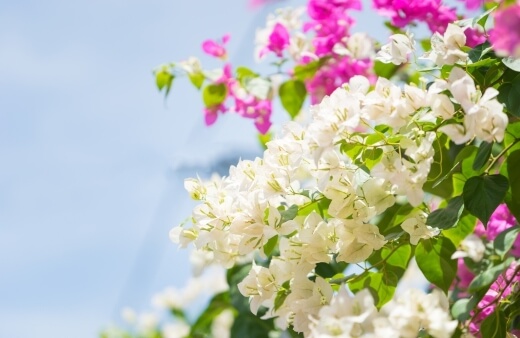
Bougainvillea plants form part of the Nyctaginaceae family and are popular ornamental vines that thrive in warm conditions.
Native to South American regions, including Brazil and Peru, these plants produce colourful sepal-like bracts that surround three simple waxy flowers. Often, these bracts are mistaken as the bougainvillea flower. However, the colourful elements of this species are, in fact, part of the foliage.
Bougainvilleas have become a popular garden plant, especially in the Southern Hemisphere. In the right conditions, these plants will produce incredible inflorescence as much as 11 months of the year.
Depending on the variety, this inflorescence will be blue, mauve, pink, yellow, red and even white.
Many gardeners choose to grow bougainvilleas:
- Along a trellis or wall.
- In pots or hanging baskets.
- As a hedge.
- As ground cover.
- As a tree.
- As a bonsai.
Popular Bougainvillea Varieties
There are a lot of types of bougainvillea plants. So, before making your purchase be sure to find out the shape, size and colour of your potential plant. This way, you can ensure you’re buying the right cultivar for what you want.
Here are a few of our favourite varieties:
Bougainvillea ‘Gold Rush’This variety is great for growing along a trellis or wall or as a bougainvillea ground cover. It produces light, almost golden blooms. | 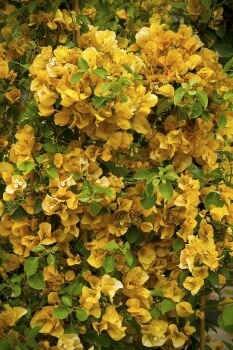 Source: monrovia.com |
Bougainvillea ‘White Stripe’This pearl coloured bougainvillea is a stunning summer annual, which can offer an elegant touch to your garden. | 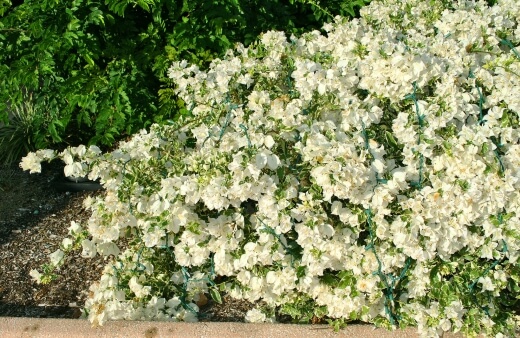 |
Bougainvillea ‘Cherry Blossom’A striking variety, with gentle pink-tipped flowers. Ideal for hanging baskets. | 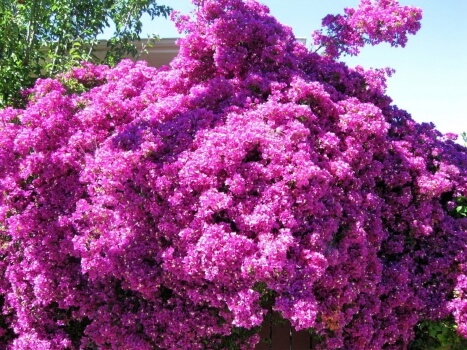 Source: davesgarden.com |
Bougainvillea ‘Purple Queen’If a pop of colour is what you’re looking for, this is an ideal option. With deep plum coloured flowers, this bougainvillea will make a statement. |  |
Bougainvillea ‘Barbara Karst’Another great cultivar to grow along with patios or a trellis, this variety is water-wise and evergreen in warmer climates. | 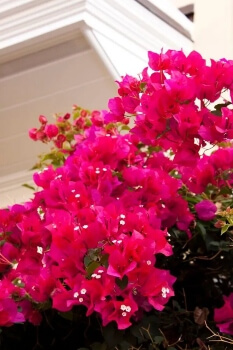 Source: myplantin.com |
Bougainvillea ‘Gold Rush’

Source: monrovia.com
This variety is great for growing along a trellis or wall or as a bougainvillea ground cover. It produces light, almost golden blooms.
Bougainvillea ‘White Stripe’

This pearl coloured bougainvillea is a stunning summer annual, which can offer an elegant touch to your garden.
Bougainvillea ‘Cherry Blossom’

Source: davesgarden.com


Get Your Free Guide:
Master Growing Australian Natives eBook
A Must Have Complete Guide for Every Australian Garden
Get Your Free Guide:
Master Growing Australian Natives eBook
A Must Have Complete Guide for Every Australian Garden
A striking variety, with gentle pink-tipped flowers. Ideal for hanging baskets.
Bougainvillea ‘Purple Queen’

If a pop of colour is what you’re looking for, this is an ideal option. With deep plum coloured flowers, this bougainvillea will make a statement.
Bougainvillea ‘Barbara Karst’

Source: myplantin.com
Another great cultivar to grow along with patios or a trellis, this variety is water-wise and evergreen in warmer climates.
How to Grow Bougainvillea
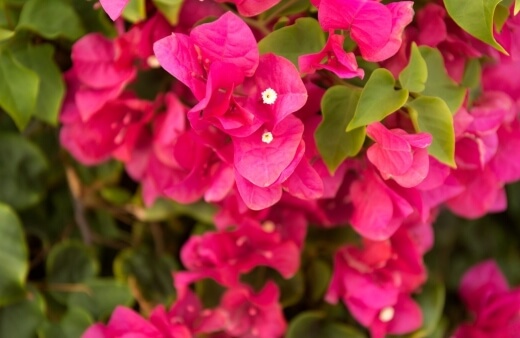
Especially in the Australian climate, bougainvillea plants are incredibly easy to grow. The most important part of bougainvillea growth is ensuring that your plant gets plenty of sunlight.
Ideally, you’ll want to grow your bougainvillea hedge or plant in full sun, south-facing spot. These plants need a minimum of 6 hours of direct sunlight to produce a plentiful bloom.
Should it not be provided with the right level of sun, your bougainvillea flowers will lack a distinct brightness. This can be a common issue when growing bougainvillea in pots. Even indoors, you’ll need to ensure enough daily, direct sunlight.
Bougainvillea plants prefer well-draining, slightly acidic soil. It is often recommended, especially when growing bougainvillea in pots, to spruce the soil with a mix of sand and perlite.
Check out our review on the best soils for pots for more info.
The ideal soil pH range is between 5.5 and 6.0. To keep your soil at the right acidity level, you can always add limestone or sulphur to the soil from time to time.
Propagating Bougainvillea
The easiest way to get your hands on a healthy growing bougainvillea is to purchase a smaller plant from your local garden centre. This way, you can also ensure you’re choosing the right cultivar you’re looking for.
Propagating bougainvillea from a cutting is possible but can be incredibly difficult to get right. You would need to:
- Remove a smaller shoot from a healthy, blooming bougainvillea during the spring.
- Your cutting should be around 8 centimetres in length.
- Dip the cutting into a rooting hormone, and plant into a rich compost mix to root.
- Keep your cutting in a sheltered, warm and humid spot.
Again, this method may not always result in success.
Planting Bougainvillea
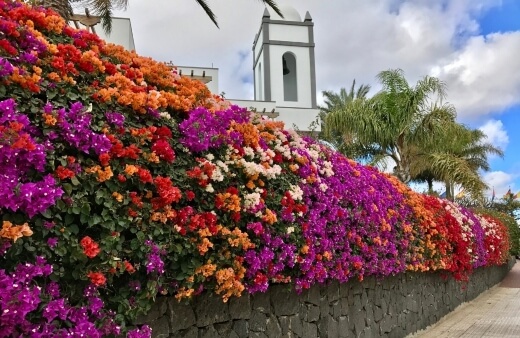
If you’ve purchased your bougainvillea plants from a local nursery, you will need to prepare the planting site before you start.
Here is what you’ll need for planting bougainvillea:
- Nourish the soil of the planting site with a high-phosphate fertiliser. Simply mix into the soil.
- Dig a hole twice the size of the root ball. Ensure that the soil is loose and moist.
- Remove the root ball from the bag and gently tousle the roots loose.
- Plant into the hole and backfill. Gently press onto the top of the soil to remove any air pockets.
- Water thoroughly directly after planting.
If you’re planning on growing a bougainvillea hedge, you can simply line a few bougainvillea plants into a row. Connect these plants with a few horizontal wires, onto which the vines will be able to creep, connecting your hedge.
Bougainvillea Care Guide

Once established, bougainvillea plants are fairly easy to care for. However, it is important to note that bougainvillea plants are prolific growers, so a little maintenance may be required to keep your garden looking well kept.
When it comes to water, you can be incredibly sparing. Bougainvilleas are drought tolerant plants and don’t do well with wet feet; as such, you’ll only want to give them a deep watering every 3 to 4 weeks. Allow at least the first 5 centimetres of soil to dry out between watering.
Fertiliser can be added annually during the spring. This will encourage bushy growth and a wealth of bloom. Be sure to choose a balanced, slow-release, high-phosphorus fertiliser.
If you're growing your bougainvillaea in pots and live in a region with a particularly cold region, it may be advisable to move your pots into a sheltered location during the winter. Most healthy plants will be able to tolerate conditions around 2°C in winter.
Pruning will be the most important part of your bougainvillea care. Done at the end of the flowering season, pruning is the best way to force a bountiful bloom and control shape and size.
When pruning, be sure to:
- Use a pair of gloves. Not only does the bougainvillea have thorny stems, but the sap from the stems can cause rashes for some people. Rather protect yourself with a good pair of gardening gloves.
- Sterilize Your Shears. Before cutting, be sure to clean your shears to protect your bougainvillea from any potential disease. (Here is our review on the best garden shears for 2024)
- Cut Back A Bit. Your plants won’t have an issue if you get a little excited with your shears. When pruning, cut back as much as 1/3 of the stems.
Bougainvillea Problems
These plants don’t often have issues unless the conditions are unfavourable. As long as you’re ensuring enough sun and that your soil is draining, your plants should be fairly happy.
Why does my bougainvillea have pale leaves?
Drab and pale leaves are often a sign of overwatering. Again, these plants are privy to wet feet. So, make sure your soil is draining in between watering. Alternatively, regularly test your soil with a soil moisture meter.
Why are these bugs on my bougainvillea ?
An insect infestation can lead to mottled growth of the bougainvillea flower. The culprits are usually scale insects, aphids or spider mites. Consider using a natural insecticide or neem oil to treat this issue.
For more gardening tips, check out some monthly gardening tips and don't miss our growing guides on Ranunculus, Little Gem Magnolia, and Dahlias.
Bougainvillea Frequently Asked Questions
Is bougainvillea evergreen in Australia?
In warmer parts of Australia, bougainvillea is a reliable evergreen climber, while in cooler parts of the South East and Tasmania, bougainvillea grows as a perennial deciduous climber, losing its leaves in late autumn.
Where is the best place to plant bougainvillea?
Bougainvillea needs good drainage above everything else, so planting it in well-drained containers, or sandy soil is a must, but make sure you balance those conditions with good pelleted fertiliser, or diluted feed when you water them throughout summer to help cultivate those stunning foliage colours!
Does bougainvillea need trellis?
Bougainvillea cannot completely support their own weight, but will naturally twist and climb through any trellis, trees, shrubs, or support you provide for them.
Without a trellis, bougainvillea will grow as a groundcover plant and may rot in wet weather, so they do need some form of trellis or support.
Does bougainvillea come back every year?
Bougainvillea is a perennial climbing plant and will come back every year unless it is exposed to prolonged freezing temperatures for more than 7 days at a time.
Freezing around the leaves will cause defoliation, but bougainvilleas in pots are susceptible to frozen roots, which will kill the plant.
Is bougainvillea better in pots or the ground?
All plants are better in the ground if you can give them the space they need, and the right soil conditions, but for most Australian gardens, the easiest way to provide the conditions bougainvillea needs are by planting them in pots.
What is the lifespan of bougainvillea?
Bougainvillea can live for up to 200 years, with a few exceptional examples of historic bonsais still surviving now. However, the natural lifespan of a bougainvillea outdoors in the garden is around 50 years, due to diseases, the strain on roots, and cracking bark.
Can bougainvillea be kept small?
Bougainvillea can be restricted by pruning their roots every three years and staking to the same pot size. They will continue to grow, but more slowly. For even more extreme restriction, bougainvillea can make some of the most wonderful bonsai you will ever see.
Is bougainvillea low maintenance?
Bougainvillea are definitely not low-maintenance plants. They require a lot of upkeep, regular soil checks, and just the right amount of nutrition to thrive. Like all plants, if you forget to water them, they will forgive you, but constant neglect will really limit their display.
How do you keep bougainvillea blooming?
Remember, bougainvillea flowers are not the main attraction, the colourful ‘flowers’ we are used to are actually the new leaves coming through. As those leaves fade, bougainvillea will continue to produce new colourful foliage after them, so the key to consistent colour is feeding, not deadheading!
How long does bougainvillea take to mature?
Bougainvillea can reach its mature height in about five to ten years, but grow reasonably fast, so with proper training and support, it can easily cover a trellis after four years with good drainage and slow-release fertilisers or mulch.
Are bougainvillea invasive?
Bougainvillea is not an invasive plant. Its root can spread if grown in the ground, but it won’t damage property and is easy to dig up with reasonably shallow roots until the plant establishes.
When does bougainvillea produce flowers?
Bougainvillea flowers are tiny white forms in the centre of the colourful leaves, produced mostly in summer. However, the colourful foliage we know and love is produced all year round, from autumn right through to mid-summer.
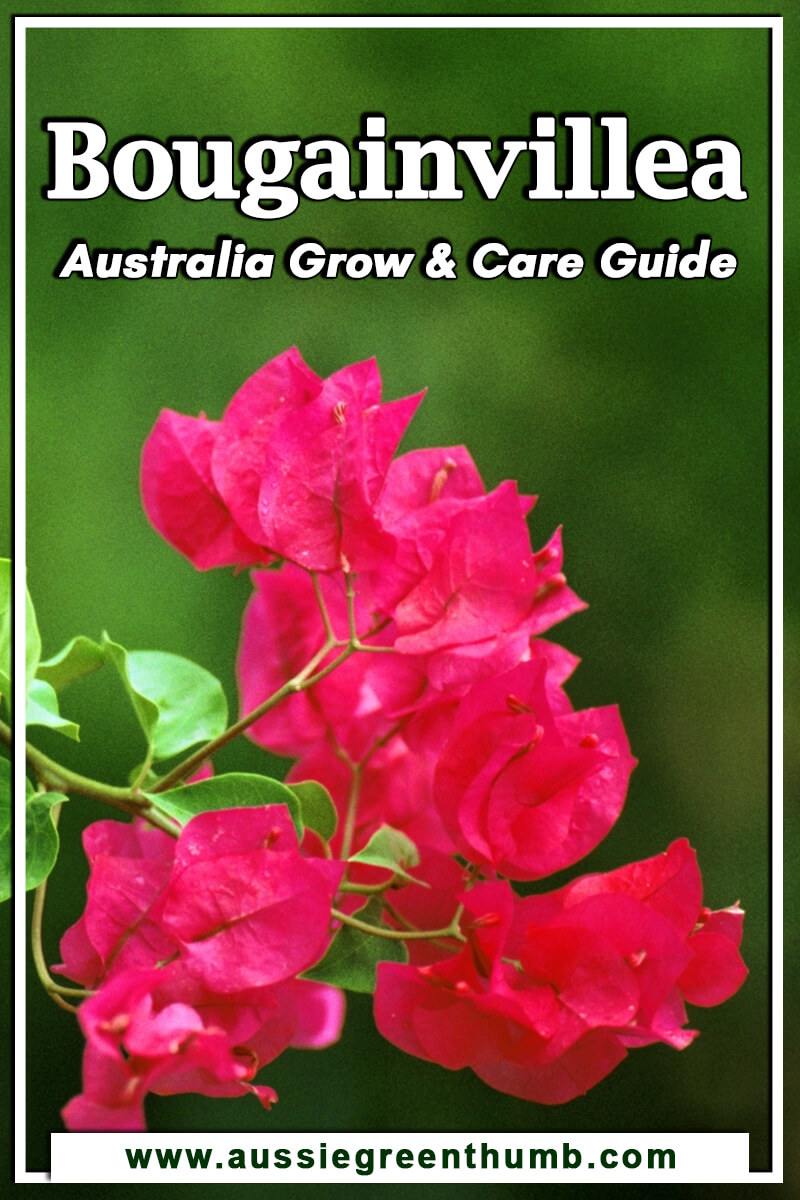
Wrapping Up Our Bougainvillea Growing Guide
Always ensure your bougainvillea is getting all of the sunlight it needs. Check on your soil occasionally, making sure the moisture level is right, and don’t forget to prune when needed.
Follow these tips, and you’ll have plenty of brilliantly blooming bougainvillea’s almost year-round.
Published on January 7, 2023 by Gary Clarke
Last Updated on February 1, 2025



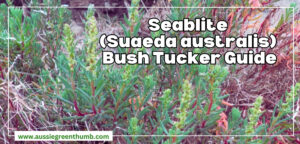
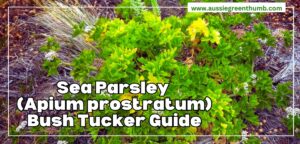
How do I purchase the book on growing
Bougainvillea I would like to know as the two plants given to me overnight it defoliated all the green leaves no bites marks We farmed cotton in Q'ld
now living Auckland NZ
Hey Nina,
Thank you for reaching out. Currently we do not have our content available for purchase. Our information is on this page above, but let me give you some advice on your situation.
The most likely cause of sudden leaf drop is either completely dry soil in pots, or overwatering. By the sounds of it, you’ve just been given these plants and they’re still in their containers, so I’m going to hazard a guess and say that maybe they were left without water for too long.
If you soak the root ball they might recover.
If, on the other hand, you’ve planted them in the garden, and they’re sitting in wet soil or even if the subsoil is wet clay, they might have just developed root rot very quickly as a result of transplant shock.
If it’s the latter, there’s not much you can do, but if they’re just dry, cut them back, water them well and give them a good feed. When needed growth appears, pop them in fresh compost in a container until they get good growth on them.
Best regards,
Gary Clarke
Hello I’m wanting to plant a bougainvillea but it can it be on the house or shared fence ,,si im thinking of a large pot and a lattice in the pot ,,do you think this will work?also want to plant some sort of flower that will overflow to the ground and cover some of the pot .I live in NSW AU I think we are in 10 zone .I planted one in the ground around a dead tree ans it seems to be growing fine .Thankyou
Dawn
hi Gary, do you know where we can purchase bougainvillea "Jezebel" in the Sydney area. In memory of a friend's dog, Jezebel.
Thank you.
Lisa
Hi Dawn,
It’s a common issue, but you’ve got the right idea. Sometimes it’s just not possible to grow plants where they’re best suited (along the house or a fence) because those shared spaces are hard to manage.
But bougainvillea grow really well in containers, so you shouldn’t have any problems provided you feed them well enough. The lattice will definitely be required, and it means you can move the whole thing around fairly easily, if necessary.
The more complicated part of the question is about what to plant around the base of your bougainvillea. I think there are many gardeners who worry about this, because you’re adding plants to a container that’s already going to be feeding a potentially very large plant.
But, the beauty of containers is that 1) it’s never permanent, and 2) you can feed them.
Choose something like lavender or salvias if you want a low maintenance companion plant for bougainvillea. They like the same conditions, need the same soils, and can be fed with the same fertilisers.
For something more showy, leave space at the top of the container when you plant your bougainvillea and just plant bedding like begonias and petunias into fresh compost each year.
Best regards,
Gary Clarke
Hi Lisa,
I’m sorry to hear about the loss of your friend’s dog. For Bougainvillea ‘Jezebel’ in the Sydney area, I recommend checking with local nurseries, garden centers, or online plant retailers.
You might also want to inquire with specific breeders or specialty plant shops that focus on bougainvillea varieties.
Wishing you the best in finding this special plant in memory of Jezebel.
Warm regards,
Gary Clarke
Where can we buy a Bougainvillaea in and around Botany or Sydney Australia? Thank you
Hi Glenda,
Thank you so much for reaching out!
While we don’t sell plants ourselves — we’re a site focused on gardening tips and advice — you can try local nurseries or garden centres around Botany and Sydney for Bougainvillea. A quick online search for “Bougainvillea near me” or “Bougainvillea [your postcode]” might also help you find some options nearby.
I hope this helps, and feel free to explore our site for more gardening inspiration! We’re always here if you have any questions.
Warm regards,
Gary Clarke